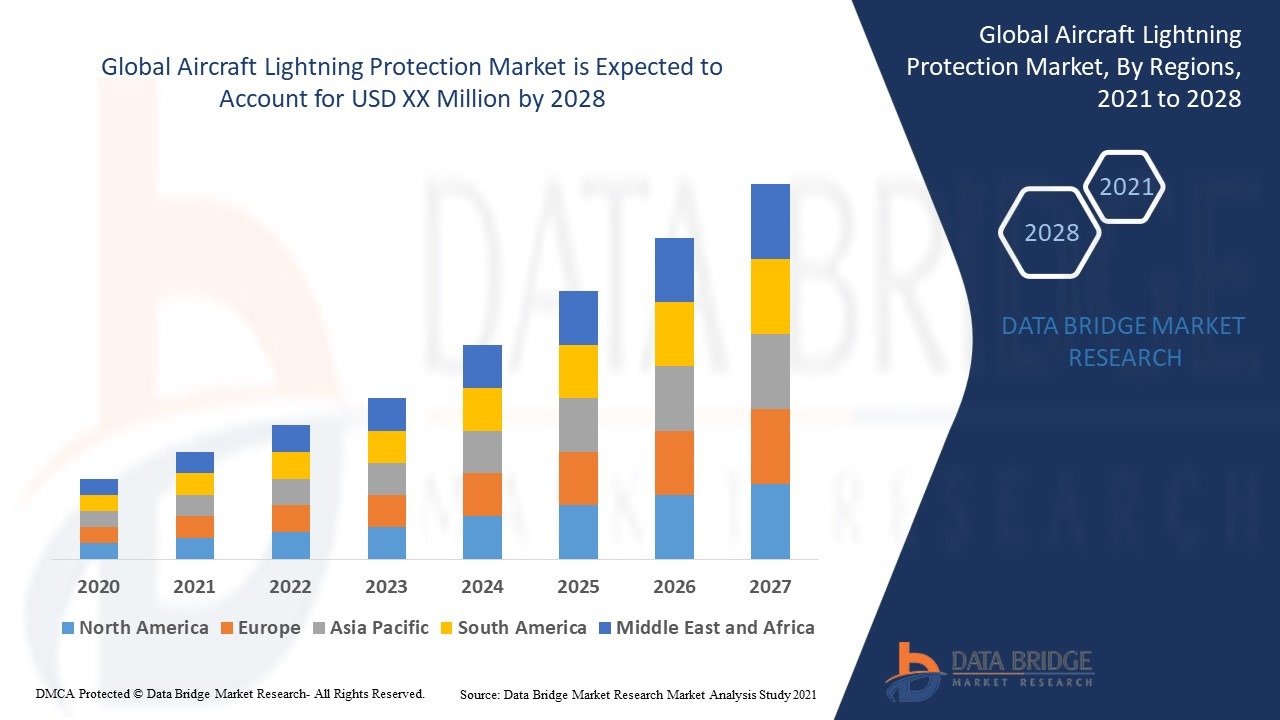
Introduction
In the vast expanse of the sky, aircraft are subjected to various natural phenomena, with lightning strikes being one of the most formidable challenges. The aviation industry has long recognized the importance of safeguarding aircraft from the potentially devastating effects of lightning. As air travel continues to grow, so does the need for advanced lightning protection systems.
Understanding Aircraft Lightning Protection
Aircraft lightning protection market refers to the design and implementation of systems that prevent or mitigate the effects of lightning strikes on aircraft. These systems are crucial for maintaining the structural integrity of the aircraft and ensuring the safety of passengers and crew.
Components of Lightning Protection Systems
-
Static Dischargers: Devices that dissipate accumulated electrical charges from the aircraft’s surface.
-
Expanded Metal Foils: Conductive materials applied to the aircraft’s surface to redirect lightning strikes.
-
Transient Voltage Suppressors: Components that protect electronic systems from voltage spikes caused by lightning.
-
Lightning Detection and Warning Systems: Technologies that detect nearby lightning activity and provide warnings to the flight crew.
Market Dynamics
Growth Drivers
-
Increasing Air Traffic: The rise in global air travel has led to a higher number of aircraft in operation, thereby increasing the demand for effective lightning protection systems.
-
Advancements in Aircraft Design: Modern aircraft are incorporating more composite materials, which, while lightweight, can be more susceptible to lightning strikes. This necessitates the development of specialized protection systems.
-
Stringent Safety Regulations: Aviation authorities worldwide are enforcing stricter safety standards, compelling manufacturers to invest in advanced lightning protection technologies.
Challenges
-
High Development Costs: The research and development of advanced lightning protection systems require significant investment, which can be a barrier for smaller manufacturers.
-
Integration with Existing Aircraft: Retrofitting older aircraft with modern lightning protection systems can be complex and costly.
Market Outlook
According to various industry reports:
-
The global aircraft lightning protection market was valued at approximately USD 4.5 billion in 2023 and is expected to reach USD 8.9 billion by 2033, growing at a CAGR of 7.06% during the forecast period.
-
Another report indicates that the market size is projected to grow from USD 5.14 billion in 2024 to USD 5.73 billion in 2025 at a CAGR of 11.3%.
Regional Insights
-
North America: Dominates the market due to the presence of major aircraft manufacturers and stringent safety regulations.
-
Asia-Pacific: Expected to witness the highest growth rate, driven by increasing air travel and investments in aviation infrastructure.
-
Europe: Houses several key players and is focusing on enhancing aircraft safety standards.
Technological Innovations
The industry is witnessing several technological advancements:
-
Smart Materials: Development of materials that can adapt to environmental conditions, providing enhanced protection.
-
Integration with Avionics: Lightning protection systems are being integrated with aircraft avionics for real-time monitoring and response.
-
Advanced Coatings: Use of conductive coatings that improve the aircraft’s ability to withstand lightning strikes.
Future Trends
-
Electrification of Aircraft: The shift towards electric and hybrid-electric aircraft will require the development of specialized lightning protection systems.
-
Increased Research and Development: Ongoing R&D efforts are focused on creating more efficient and cost-effective lightning protection solutions.
-
Collaborations and Partnerships: Collaborations between aircraft manufacturers, technology providers, and regulatory bodies will drive innovation in lightning protection systems.
Source: https://www.databridgemarketresearch.com/reports/global-aircraft-lightning-protection-market
Conclusion
As the aviation industry continues to evolve, ensuring the safety of aircraft against lightning strikes remains a top priority. The growing demand for air travel, coupled with advancements in aircraft design and stringent safety regulations, is propelling the aircraft lightning protection market forward. With ongoing technological innovations and a focus on research and development, the industry is poised to meet the challenges of the future and continue to provide safe and reliable air travel.